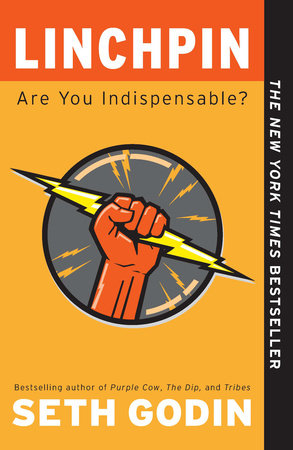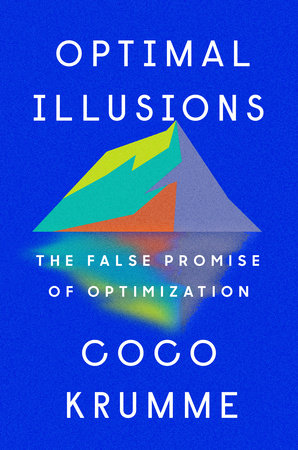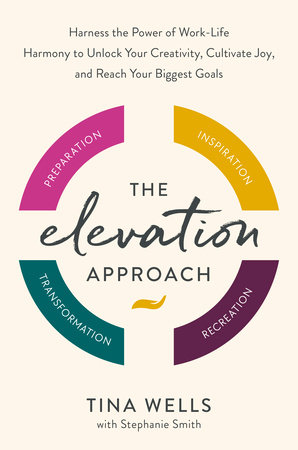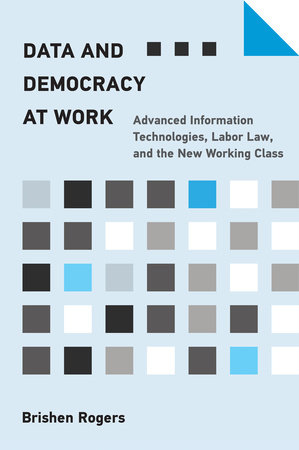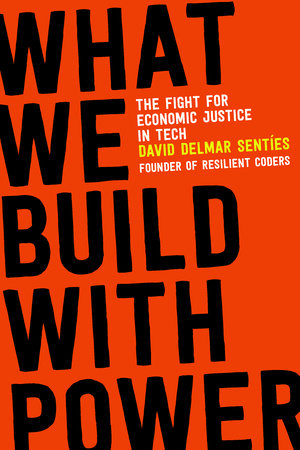Quick Summary
One Sentence Summary
“Linchpin: Are You Indispensable?” by Seth Godin challenges the traditional work mindset, advocating for the power of creativity, emotional labor, and personal initiative in becoming indispensable in any field.
Big Idea
The central premise of “Linchpin” is the transformation from being just another cog in the machine to becoming an indispensable linchpin within an organization or industry by harnessing unique talents, emotional intelligence, and the willingness to bring personal art to work.
Five Key Ideas
- The New World of Work: Emphasizes the shift from industrial to the connection economy, where following instructions is less valued than creative thinking.
- Becoming Indispensable: Discusses how anyone can become a linchpin by contributing original ideas and connecting with others on an emotional level.
- The Power of Emotional Labor: Highlights the importance of emotional work, not just mechanical tasks, in making a significant impact.
- Overcoming the “Lizard Brain”: Addresses the internal resistance, often fear-driven, and how overcoming it is crucial to becoming a linchpin.
- The Gift Economy: Explores the concept of giving without an immediate expectation of return as a way to build trust, reputation, and eventually, success.
Actionable Advice
- Embrace Your Uniqueness: Find what makes you unique and use it to add value in your workplace.
- Face Your Fears: Tackle projects or ideas that scare you; this is often where growth and value lie.
- Invest in Emotional Labor: Go beyond the mechanical tasks; connect, empathize, and engage with others.
About the Author
Seth Godin is a renowned entrepreneur, marketer, and author, known for his insights on marketing, leadership, and the way ideas spread. His other notable works include “Purple Cow” and “Tribes.”
Read Next
For further exploration into innovative thinking and personal development in the professional world, consider:
- “Purple Cow: Transform Your Business by Being Remarkable” by Seth Godin, for insights on how to stand out in marketing.
- “Tribes: We Need You to Lead Us” also by Seth Godin, for a deeper understanding of leadership and community building.
- “Drive: The Surprising Truth About What Motivates Us” by Daniel H. Pink, for an exploration of motivation and what drives people to succeed.
In Depth
The New World of Work
The traditional work environment, often reminiscent of assembly lines and hierarchical commands, is rapidly changing. Seth Godin, in “Linchpin”, underscores this transformation. We’re moving towards what he calls the “connection economy.” Here, creativity and innovation trump rote obedience and manual labor.
In the past, success equated to following instructions and not stepping out of line. However, this old model is fading. In its place emerges a need for workers who can think outside the box, connect with others, and bring unique perspectives. This shift is not just a trend; it’s a fundamental change in how we perceive and value work.
One detailed example from the book that vividly illustrates this shift involves a hotel staff member. Godin describes a scenario where a staff member, instead of mechanically following check-in procedures, genuinely connects with a guest. They offer a thoughtful gesture, maybe a small, personalized gift or extra help without being asked. This simple act, driven by emotional labor and genuine connection, turns a routine interaction into a memorable experience. This staff member becomes an asset, a linchpin, not just for their efficiency but for their unique, human touch.
Godin aptly states,
“The only way to get what you’re worth is to stand out, to exert emotional labor, to be seen as indispensable, and to produce interactions that organizations and people care deeply about.”
My experiences resonate with this shift. In my previous roles, I’ve seen the difference between employees who do just enough to get by and those who bring something extra to their work. The latter, the ones who engage, innovate, and connect, are the ones who not only find more satisfaction in their work but also become crucial to the team. They are the ones who get remembered, who grow, and who lead change.
What this means for us is profound yet straightforward: the path to success is no longer paved with just following instructions and keeping your head down. It’s about bringing your full self to your work, about engaging not just with tasks but with people, ideas, and emotions. It’s about finding ways to add value that a manual or a protocol can’t dictate.
This idea, the new world of work, isn’t just a concept; it’s a call to action. It’s a challenge to embrace change, to be brave enough to show our uniqueness, and to understand that our value lies not just in what we do, but in how and why we do it. The connection economy doesn’t just need workers; it needs thinkers, connectors, and creators. It needs linchpins.
Becoming Indispensable
In a world where replaceable workers are the norm, becoming indispensable is a game-changer. Godin argues that anyone can become a linchpin by offering unique contributions and forming emotional connections.
The key is not just doing your job but doing it in a way that no one else can replicate. It’s about infusing your work with passion, creativity, and a personal touch. When you do this, you become more than just an employee; you become a linchpin, someone essential and irreplaceable.
Godin gives a compelling example of an employee in a large company. This individual doesn’t just complete tasks; they go the extra mile. They don’t wait for instructions; they initiate projects. They don’t just solve problems; they identify them before they become issues. Their approach to work is proactive, thoughtful, and innovative. They build relationships, lead without a title, and inspire those around them. This person is not just doing a job; they’re making a difference. They are indispensable.
Godin encapsulates this idea perfectly:
“The linchpin feels the fear, acknowledges it, then proceeds. The resistance is not something to be avoided; it’s something to seek out.”
In my experience, this rings true. I’ve worked with people who did exactly what was asked of them, nothing more, nothing less. They were reliable but easily replaceable. Then there were those few who brought something unique to the table. They were the ones who didn’t shy away from challenges, who offered new ideas, who connected with their colleagues on a deeper level. They were indispensable.
Becoming indispensable is not about working harder; it’s about working differently. It’s about seeing your role not as a set of tasks to be completed, but as an opportunity to make an impact. It’s about leading from where you are, regardless of your official title.
To be a linchpin, embrace your uniqueness. Find your niche, the intersection between what you’re good at and what you love to do. Then, use that to add value in ways only you can. Think of your work not as a chore but as a canvas for your creativity and passion.
Remember, indispensable people are not born; they are made. They are made by their choices, their attitudes, and their actions. They are made by their willingness to go beyond the expected, to face fears, and to bring their whole selves to their work. Becoming a linchpin is not an easy path, but it is a rewarding one. It’s a path that leads not just to professional success, but to personal fulfillment and the knowledge that you are truly making a difference.
The Power of Emotional Labor
Emotional labor isn’t about the tears or drama. It’s about connection, empathy, and putting your heart into what you do. In “Linchpin,” Seth Godin places immense value on this often-overlooked aspect of work. It’s not just about getting things done. It’s about how you do them, the human touch you bring, and the relationships you build.
Godin provides a striking example involving a teacher. This teacher doesn’t just deliver the curriculum. They invest time in understanding each student, offering encouragement tailored to individual needs, and creating an environment where students feel valued and understood. It’s this emotional labor, not just the teaching, that leaves a lasting impact on the students. It transforms an ordinary class into a life-changing experience.
Godin emphasizes:
“Emotional labor is the most valuable work we do. It changes people, it changes situations, and it creates a connection.”
In my own career, I’ve seen this play out time and again. Projects or tasks led with genuine care and understanding yield better results. They create a team spirit that’s resilient and adaptive. When people feel understood and valued, they contribute more and better.
The power of emotional labor lies in its ability to forge connections and inspire trust. When you invest emotionally in your work, you’re not just completing tasks; you’re creating experiences. You’re building relationships. You’re making people feel seen and heard.
But it’s not always easy. Emotional labor requires vulnerability, empathy, and the willingness to go beyond the job description. It means being present, really listening, and engaging on a human level. It’s about showing up not just with your skills but with your heart.
This approach can transform the mundane into the extraordinary. A customer service call, for instance, can shift from a simple problem-solving task to a memorable experience that builds loyalty. An ordinary sales pitch can turn into a genuine conversation about needs and dreams, forging a lasting connection.
Emotional labor is what differentiates a replaceable worker from an indispensable linchpin. It’s what makes your work uniquely yours. It’s what makes people turn to you, trust you, and value you. It’s what makes your work art.
So, pour yourself into your work. Listen, empathize, and care. Build genuine relationships. Show your humanity. This is the power of emotional labor. It’s challenging, yes, but it’s also deeply rewarding. It’s what makes work meaningful and what makes you irreplaceable.
Overcoming the “Lizard Brain”
Our “lizard brain,” as Seth Godin calls it, is that primitive part of our minds that resists change and fears risk. It’s the voice that tells us to play it safe, to avoid potential failure. Overcoming this internal resistance is key to becoming a linchpin.
Godin shares a story of a young entrepreneur. She had innovative ideas but was paralyzed by fear. Her lizard brain was in full control, whispering doubts and magnifying risks. However, by acknowledging and confronting her fears, she managed to push past them. She took the leap, launched her business, and despite initial challenges, she found success. It wasn’t the absence of fear that defined her journey; it was the courage to move forward despite it.
Godin writes:
“The resistance is the voice in your head telling you to use caution, play it safe, and compromise. The resistance grows in strength as we entertain it.”
In my experience, this resistance is universal. We all have ideas we don’t pursue or steps we don’t take because we’re scared. The lizard brain convinces us to stick to what we know, even if it’s unfulfilling or mediocre.
Overcoming this mental barrier requires conscious effort. It’s about recognizing the fear but not letting it dictate your actions. It’s about embracing discomfort and accepting that failure is a part of growth.
To conquer the lizard brain, we need to start small. Take on tasks that challenge you but aren’t overwhelming. Speak up in meetings, propose new ideas, or lead a small project. These steps build confidence and resilience. They teach you that it’s okay to take risks and that the world doesn’t end when you step out of your comfort zone.
This journey is not just about professional development; it’s personal too. It’s about knowing yourself, understanding your fears, and learning to push past them. It’s about realizing that the greatest barrier to becoming a linchpin isn’t your skill set or opportunities; it’s often your own mindset.
Remember, overcoming the lizard brain isn’t about never feeling fear. It’s about not letting that fear control you. It’s about understanding that true growth, innovation, and becoming indispensable often lie on the other side of what scares us. So, face your fears, challenge your doubts, and step beyond the comfort zone. That’s where your potential as a linchpin truly unfolds.
Creating Art in Your Work
In “Linchpin,” Seth Godin redefines ‘art’. Art isn’t just about paintings or music. It’s about bringing creativity, passion, and uniqueness to your work. It’s about doing things in a way that only you can. This concept of art is central to becoming a linchpin.
Godin tells the story of a real estate agent. Instead of following the standard script, she turns house selling into an art form. She gets to know her clients on a personal level, understands their dreams, and connects them with homes that speak to their souls. She creates experiences, not just transactions. Her approach is not just effective; it’s memorable. She’s not just a real estate agent; she’s an artist.
He explains:
“Art is a personal act of courage, something one human does that creates change in another.”
I’ve seen this in action. Colleagues who approach tasks as opportunities to innovate, to add a personal touch, become indispensable. They turn mundane tasks into experiences. They make people feel valued and understood. They create, not just produce.
Art in work is about going beyond the manual. It’s about thinking, ‘How can I make this better, different, more meaningful?’ It’s about putting a piece of yourself into what you do.
But creating art in your work isn’t easy. It requires vulnerability. It means putting yourself out there, not knowing how it will be received. It requires breaking from the routine, experimenting, and often, facing resistance.
To start creating art in your work, look for opportunities to innovate. It can be as simple as improving a process, personalizing a service, or finding a new way to solve a problem. It’s about asking, ‘How can I make this uniquely mine?’
Remember, art isn’t about perfection. It’s about expression, connection, and impact. It’s about making your work more than just a list of tasks. It’s about making it a reflection of your creativity, passion, and uniqueness.
So, find your canvas in your work. Paint with bold strokes. Make your work your art. That’s how you become more than just an employee; that’s how you become a linchpin.
Actionable Advice
- Identify Your Unique Strengths: Reflect on what you do best and what you enjoy. Leverage these strengths in your work.
- Embrace Emotional Labor: Invest in building genuine relationships. Show empathy and understanding in your interactions.
- Challenge the Lizard Brain: Recognize when fear holds you back. Take small risks to build confidence and overcome resistance.
- Infuse Passion into Tasks: Approach your work with enthusiasm. Find aspects of your job where you can express your creativity.
- Be Proactive: Don’t wait for instructions. Look for opportunities to initiate projects or improve processes.
- Provide Extra Value: Go beyond the basic requirements. Offer solutions or insights that demonstrate your unique contribution.
- Keep Learning: Continuously acquire new skills and knowledge. Stay adaptable and open to change.
- Network Effectively: Build a diverse network. Connect with others not just for personal gain, but to share knowledge and resources.
- Show Gratitude: Acknowledge the help and support of others. A simple ‘thank you’ can strengthen relationships and build trust.
- Reflect and Adjust: Regularly evaluate your actions and their outcomes. Be open to feedback and willing to make changes.
About the Author
Seth Godin is a bestselling author, entrepreneur, and marketing guru. He was born on July 10, 1960, in Mount Vernon, New York. Godin earned an MBA from Stanford Graduate School of Business and launched his career in software and book packaging. He made a mark as the founder of Yoyodyne, a pioneering online marketing company, which was acquired by Yahoo. Godin’s work revolves around the idea of marketing as storytelling, change-making, and standing out (he calls it ‘Purple Cow’ philosophy). He has penned over 18 books, including notable titles like “Permission Marketing,” “Purple Cow,” and “Linchpin.” Godin’s blogs and podcasts are immensely popular, offering insights on marketing, leadership, and the spread of ideas. He believes in the power of ‘shipping’ work—getting it out there—and in making a meaningful impact through innovation and empathy. His unique take on marketing and change is grounded in the idea of being indispensable, daring, and connected. Godin teaches, inspires, and challenges individuals and businesses to think differently and embrace their uniqueness in a crowded marketplace.
Read These Next
You might like these similar books
- “Drive” by Daniel H. Pink
- “Outliers” by Malcolm Gladwell
- “Start with Why” by Simon Sinek
- “Daring Greatly” by Brené Brown
- “The Power of Habit” by Charles Duhigg
FAQ
Q: What is the main message of “Linchpin” by Seth Godin?
A: The main message is about becoming indispensable in your work by being innovative, creative, and emotionally involved.
Q: Who should read “Linchpin”?
A: Anyone looking to make a significant impact in their career, from professionals seeking growth to entrepreneurs aiming for success.
Q: Does “Linchpin” offer practical advice?
A: Yes, it provides actionable advice on becoming indispensable, overcoming resistance, and making meaningful contributions.
Q: Is prior knowledge of marketing necessary to understand the book?
A: No, the concepts are presented in a way that’s accessible to everyone, regardless of their background.
Q: How long does it take to read “Linchpin”?
A: It varies, but on average, it can take a few hours to a couple of days, depending on your reading speed.

